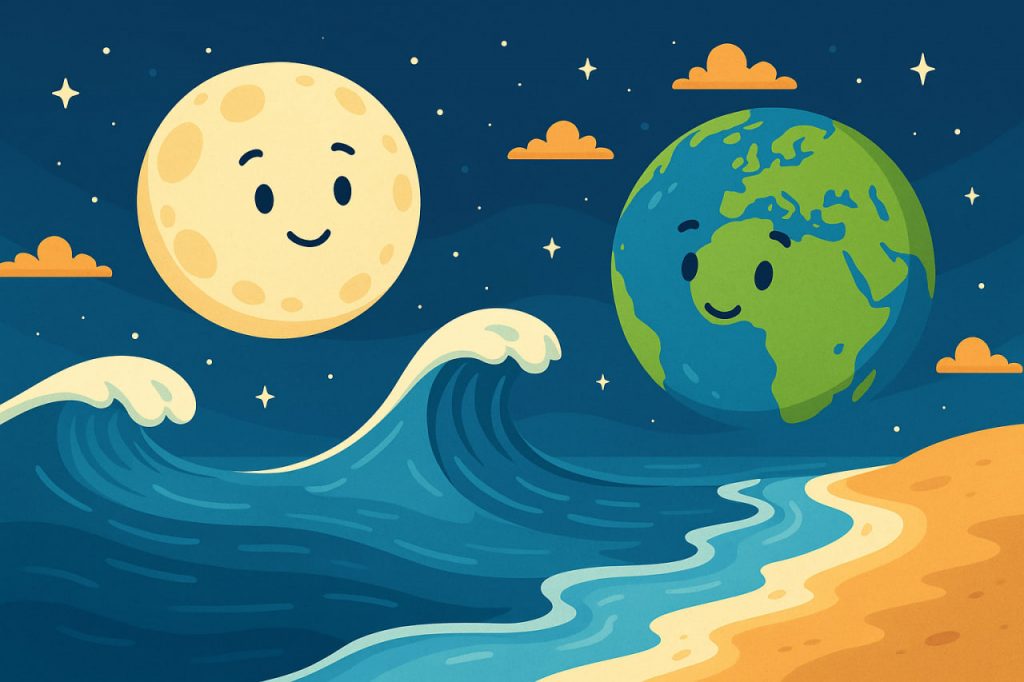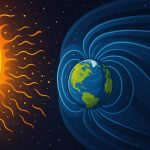The Moon has a powerful influence on our planet, even though it’s about 384,400 kilometers away. One of the most noticeable effects is the creation of tides — the regular rise and fall of ocean levels. These tidal movements happen globally and have been observed by humans for thousands of years. But why exactly does the Moon affect the oceans? The answer lies in the invisible force of gravity and the dynamic interaction between the Earth, Moon, and Sun.
How Gravity Creates Tides
The primary driver of tides is the gravitational pull of the Moon. As the Moon orbits Earth, its gravity pulls on Earth’s oceans, creating a bulge of water on the side of Earth that is facing the Moon. This bulge is what we experience as a high tide. Surprisingly, another high tide occurs on the opposite side of Earth as well. This happens because the Earth is also being pulled slightly toward the Moon, leaving the ocean behind, which creates a second bulge.
These two bulges move around the Earth as it rotates, causing most coastal areas to experience two high tides and two low tides every 24 hours and 50 minutes.
The Role of the Sun in Tides
Although the Moon is the dominant force behind tides, the Sun also plays a significant role. The Sun’s gravitational force is stronger than the Moon’s, but because it is much farther away, its effect on tides is smaller. However, when the Sun, Moon, and Earth align — during full moons and new moons — the gravitational forces combine to produce especially high and low tides, known as spring tides.
Conversely, during first and third quarters of the Moon, the Sun and Moon are at right angles relative to Earth. Their gravitational pulls partially cancel each other out, leading to neap tides, which are less extreme.
Why Tides Differ Around the World
Tides are not the same everywhere. Their intensity and timing vary based on the shape of the coastline, the depth of the water, and the geography of the ocean floor. In some places, tides may only change a few centimeters, while in others, like the Bay of Fundy in Canada, tidal ranges can exceed 16 meters.
Other factors such as wind, atmospheric pressure, and ocean currents can also influence local tides, but the gravitational interaction with the Moon remains the fundamental cause.
Tidal Locking and the Moon’s Unique Role
The Moon always shows the same face to Earth due to a phenomenon called tidal locking, where the Moon’s rotation period matches its orbit around Earth. This stable relationship keeps the tidal forces consistent over long periods of time. Without the Moon’s gravitational influence, Earth would still have tides, but they would be far weaker and mostly driven by the Sun.
Scientists believe that the Moon has helped stabilize Earth’s axial tilt, which contributes to the relatively stable climate that supports life. Thus, the Moon’s impact goes beyond just tides — it helps maintain conditions necessary for the biosphere.
The Importance of Understanding Tides
Understanding tides is critical for navigation, fishing, coastal construction, and predicting flooding. Many ecosystems, like mangrove forests and tidal marshes, depend on the regular flow of tides to survive. Humans have even harnessed tidal energy as a renewable source of electricity in some regions.
By studying tides, scientists can also gain insights into the Earth–Moon relationship and apply this knowledge to other planetary systems in the universe.
Glossary
- Tides: The regular rise and fall of ocean water caused mainly by the Moon’s gravity.
- Gravitational pull: The force of attraction between two masses.
- High tide: When ocean water reaches its highest level due to the Moon’s gravity.
- Low tide: When ocean water recedes to its lowest level.
- Spring tides: Exceptionally high and low tides during full or new moons.
- Neap tides: Less extreme tides that occur during the Moon’s quarter phases.
- Tidal locking: A situation where one celestial body always shows the same face to the object it orbits.
- Axial tilt: The angle at which Earth’s axis is tilted from its orbital plane.


